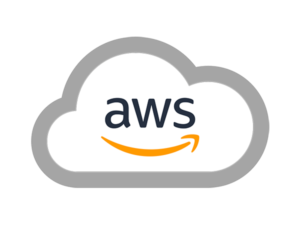Amazon Web Services (AWS)
Amazon Web Services (AWS) is a secure cloud services platform, offering compute power, database storage, content delivery and other functionality to help businesses scale and grow. In simple words AWS allows you to do the following things- Running web and application servers in the cloud to host dynamic websites.

Prerequisties
- None
Duration
Online
- The format is 40% theory, 60% Hands-on.
- It is a 60 days program and extends up to 2 hrs each.
Corporate
- The format is 40% theory, 60% Hands-on.
- It is a 15 days program and extends up to 8 hrs each.
Classroom
- Private Classroom arranged on request and minimum attendees for batch is 5.
Course Content
Section 1:
Fundamentals of Cloud Computing
1. Introduction to Cloud Computing
2. Cloud Environment Architecture
3. Cloud Computing Models
Section 2:
Identity & Access Management
1. Creating IAM users and groups
2. Understanding the IAM Policies
3. IAM Policy and IAM Role
4. Setting up IAM security
Section 3:
Infrastructure & Networking
1. Introduction to Amazon Web Services
2. AWS Global Infrastructure
3. Introduction Virtual Private Cloud
4. VPC & Subnets
5. Internet Gateways, VPC Peering & NAT Gateways
6. IP Addressing in AWS
7. Understanding AWS Security Groups
8. Understanding VPC endpoints
Section 4:
Elastic Cloud Compute
1. Launching our first EC2 instance
2. EC2 instance types & Pricing Models
3. Instance tenancy
4. Elastic ip’s use cases
5. AMI & Snapshots
6. Load Balancers and Target Groups
7. Autoscaling groups, Launch template and Launch configurations.
8. Understanding AWS limits
9. Transferring AMI from one account to another account
10. Understanding placement groups
11. Understanding keypairs backend
Section 5:
Storage
1. Introduction to Block & Object storage mechanism
2. Introduction to Elastic Block Store – EBS
3. EBS Snapshots
4. EBS Volume Types
5. Instance Store Volumes
6. Introduction to Simple Storage Service (S3)
7. Features of S3
Section 6:
Domain Name System
1. Introduction to DNS
2. Understanding DNS Records
3. Introduction to Route53
4. Creating hosted zones and record sets
5. Understanding routing policies in depth
Section 7:
Aws Lambda and API
1. Getting started with AWS Lambda
2. Setting up triggering points
3. Introduction to API
4. Understanding working of API
5. Building our API with API Gateway
Section 8:
Building Scalable Applications& Notification services
1. Introduction to Message Brokers
2. Understanding SQS
3. Understanding Simple Notification Service (SNS)
4. Understanding AWS SES
Section 9:
AWS Developer tools
1. AWS code commit
2. Code build
3. Code deploy
4. Code artifact
5. Code pipeline
Section 10:
Relational Databases
1. Understanding RDS
2. Creating RDS instance
Section 11:
Monitoring
1. Understanding CloudWatch
2. Auditing AWS environment with CloudTrail



